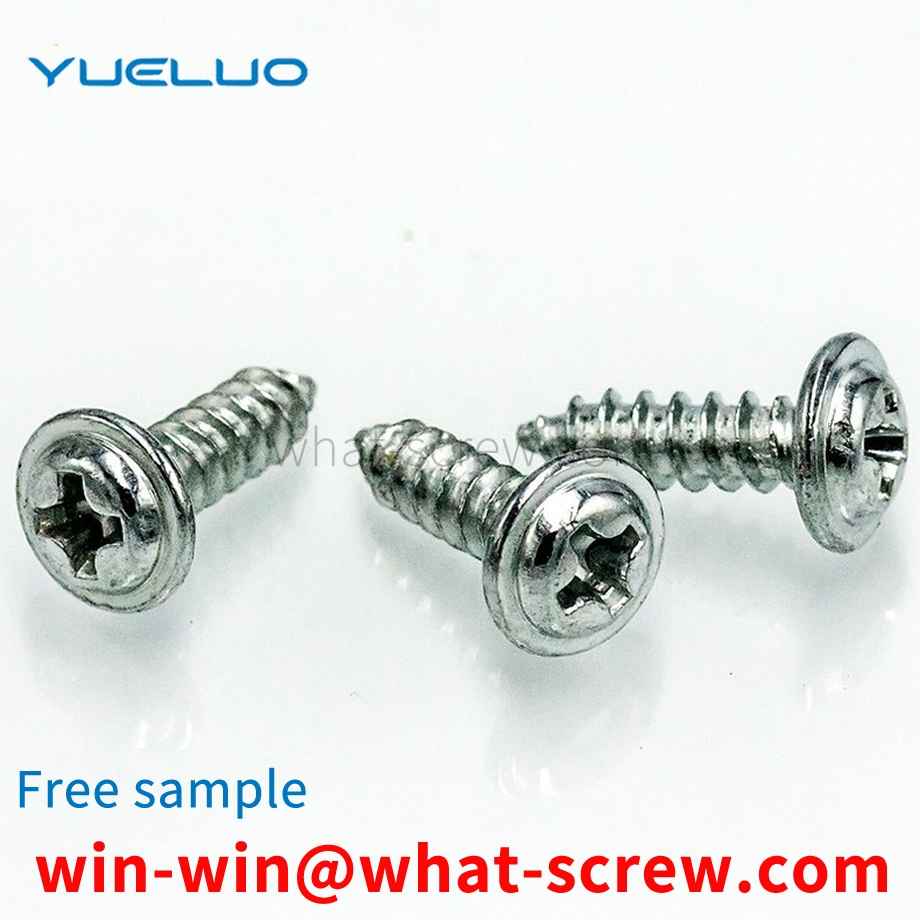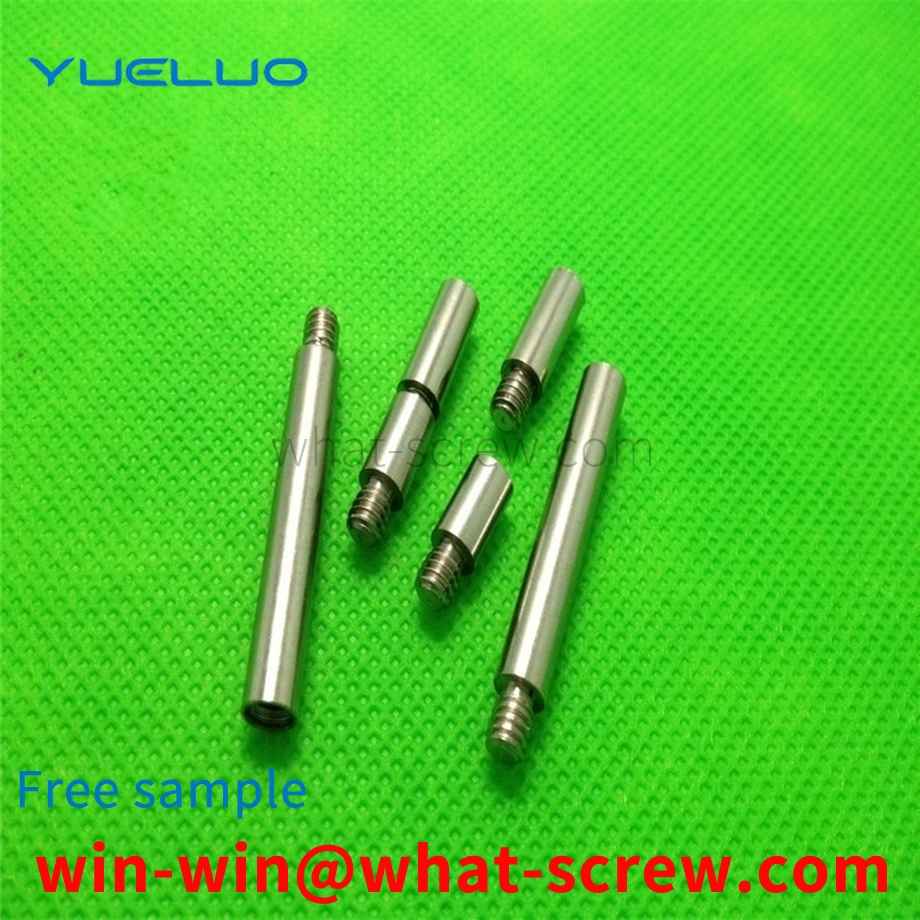High-strength hexagon head bolt combination screws for steel structures, mainly used in railway and highway bridges, boiler steel structures, industrial plants, high-rise civil buildings, tower and mast structures, hoisting machinery and their steel structures need to use friction-type high-strength bolt combinations for screws. It is characterized by an extra dodecagon at the end of the bolt, also known as the bolt. When installing, a special electric wrench must be used, which has two socket heads up and down, one is set on the hexagonal body of the nut, and the other is set on the decagon body of the outer hexagon screw. When tightening, apply a clockwise force to the nut, and apply an equal counterclockwise force to the dodecagon body of the bolt, so that the connecting neck between the end of the outer hexagon screw and the dodecagon body is subjected to torsion shearing until the neck is sheared. So far, the installation has come to an end. This torsion shear type high-strength outer hexagon screw is a one-time-use screw and generally cannot be removed after installation.
rivet is a nail-shaped object used to join two parts or components with a through hole and a cap on one end. In riveting, the riveted parts are connected by their own deformation or interference. There are many types of rivets, and they are informal, commonly used are R-type rivets, fan rivets, blind rivets, blind rivets, tree rivets, semi-circular head, flat head, semi-hollow rivets, solid rivets, countersunk head rivets, blind rivets, hollow rivets Rivets, these usually use their own deformation to connect the riveted parts. Generally less than 8 mm with cold riveting, larger than this size with hot riveting. But there are exceptions. For example, the nameplate on some locks is riveted by the interference between the rivet and the lock body hole.
T-bolts have been widely used in the fields of aviation, aerospace and defense due to their good positioning and anti-shedding effects. Its related standards have special requirements for accurate positioning, anti-falling off, and dimensional consistency of T-bolts. This requires that the position, size and shape and position tolerance of the anti-fall hole of the T-bolt shank must be controlled within a certain range. Therefore, the processing method of the anti-shedding hole is particularly important. Since the machined anti-shedding hole is located at the position of the rod, the milling processing efficiency is too low, the product cost is high, and there is a large machining error. When conventional drilling is used, the consistency of the anti-shedding hole size cannot be guaranteed. To solve the above problems of low efficiency and dimensional instability
Compared with the prior art, the technical effect of Yueluo Company is: during the screwing process of the nut, the tube wall of the nut is elastically deformed so that the convex ring on the screw is matched with the groove on the nut, and the slope of the convex ring matches the groove. The groove wall is abutted against to limit the relative position of the nut tube and the screw shaft in the axial direction, which not only ensures the reliability of the threaded connection, but also achieves a significant anti-loosening and anti-falling effect. After the threaded connection, excessive force is applied to remove the nut and screw, so that it can be reused to save costs.
Stainless steel screws are classified into austenitic stainless steel, ferritic stainless steel, martensitic stainless steel, and precipitation hardening stainless steel. The selection of stainless steel screws is also based on principles. Where to start, let you choose the stainless steel screws you need. After comprehensive and comprehensive consideration of these five aspects, the grades, varieties, specifications and material standards of stainless steel screws are finally determined. Austenitic stainless steel: the most basic alloying elements of austenitic stainless steel are chromium and nickel. The grade is a chromium-nickel austenitic stainless steel with a chromium content of about 18% and a nickel content of about 8%, often called 18-8 stainless steel. The element ratio of chromium and nickel basically ensures that the structure of the steel is stable austenitic ferritic stainless steel: 430 type ordinary chromium steel, its corrosion resistance and heat resistance are better than 410 type, magnetic, but it It cannot be strengthened by heat treatment, and is suitable for stainless steel screws with slightly higher corrosion resistance and heat resistance and general strength requirements. Martensitic stainless steel: Type 410 and 416 can be strengthened by heat treatment, with a hardness of 35 to 45HRC, and good machinability. They are used for general-purpose heat-resistant and corrosion-resistant stainless steel screws. Type 416 has a slightly higher sulfur content and is a free-cutting stainless steel. Type 420, sulfur content? R0.15%, improved mechanical properties, can be strengthened by heat treatment, maximum hardness value of 53 ~ 58HRC, used for stainless steel screws requiring higher strength. Precipitation hardening stainless steel: 17-4PH, PH15-7Mo, they can get higher strength than the usual 18-8 type stainless steel, so they are used for high-strength, corrosion-resistant stainless steel stainless steel screws. A-286, a non-standard stainless steel, has higher corrosion resistance than commonly used Type 18-8 stainless steels, as well as good mechanical properties at elevated temperatures. Used as high-strength, heat-resistant, corrosion-resistant stainless steel screws, can be used to 650 ~ 700 ℃. Austenitic stainless steel: The commonly used models are 302, 303, 304, and 305, which are the so-called 18-8 austenitic stainless steels. Both corrosion resistance and mechanical properties are similar. The starting point of selection is the production process method of stainless steel screws, and the method depends on the size and shape of stainless steel screws, and also depends on the quantity of production. Type 302 is used for machined screws and self-tapping bolts. Type 303 In order to improve machinability, Type 303 stainless steel is added with a small amount of sulfur and is used to machine nuts from bar stock. Type 304 is suitable for hot heading stainless steel screws, such as longer gauge bolts, large diameter bolts, which may be beyond the scope of the cold heading process. Type 305 is suitable for cold heading processing of stainless steel screws, such as cold formed nuts, hex bolts. Type 309 and Type 310, their Cr content and Ni content are higher than 18-8 type stainless steel, suitable for stainless steel screws working at high temperature. Types 316 and 317, both of which contain the alloying element Mo, have higher high temperature strength and corrosion resistance than 18-8 type stainless steel. Type 321 and Type 347, Type 321 contains a relatively stable alloying element Ti, Type 347 contains Nb, which improves the intergranular corrosion resistance of the material. It is suitable for stainless steel standard parts that are not annealed after welding or serve at 420~1013℃.
We have many years of experience in the production and sales of screws, nuts, flat washers, etc. The main products are: flat-end set screws, flat-end screws, ASMEB1821 screws, solid wood screws with no through holes, etc. We can provide you with products suitable for you. fastener solutions.



















 Service Hotline
Service Hotline




